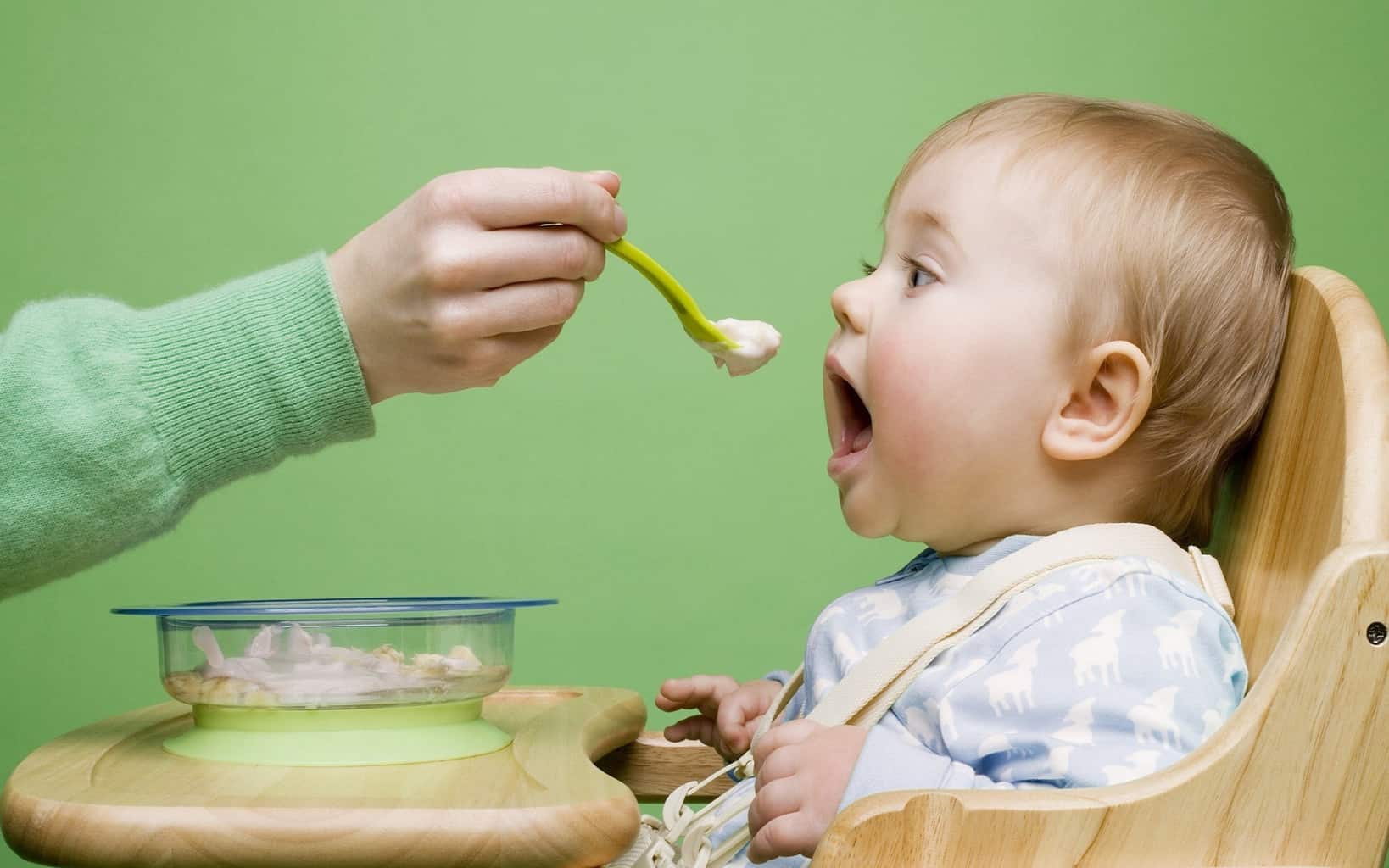
Introducing Solids to Your Baby – Complete Guide to Successful First Feeding
Introducing solids for your baby is no doubt an exciting milestone for both baby and parents. Seeing your baby’s expression when eating foods for the first time is truly priceless. As parents, of course we want to offer our babies tasty and nutritious foods. But feeding solids is not that simple. When should we start solids? How much should we be giving? How often? Should it be before milk feed or after? These are just some of the questions I had when baby Kayden started solids. So I thought having a blog post on our first foods experience would be helpful for new parents.
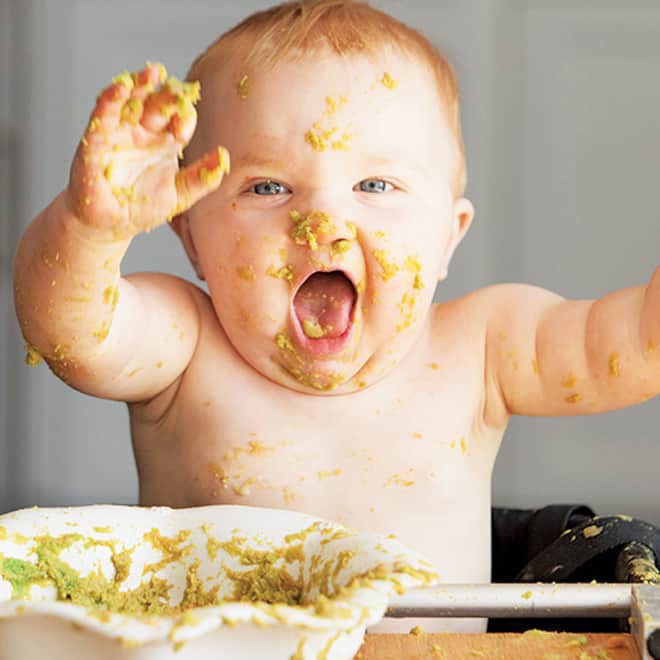
How to tell if your baby is ready for solids?
World Health Organization (WHO) suggests that babies should be fed exclusively with breast milk or formula until at least 6 months to minimize the risk of having allergic reactions to foods. However, many paediatricians, including mine, are suggesting to start solids at 4-6 months when babies show ALL of the following:
- Baby is interested in foods by staring attentively at your food when you are eating or trying to reach and grab foods on the table
- Baby can sit up well without support and has strong neck control
- Baby has lost his/her tongue-thrust reflex which pushes any solids out with his/her tongue
Introducing Solids: 4 months or 6 months?
In developing countries, the risk of illness dramatically increases when babies start solids since many families may lack access to clean water and/or refrigeration. That’s why WHO and many other healthcare organizations suggest the 6 month milk-only diet standard. However, studies have found that with proper food handling procedures, feeding solids to babies at 4 months has no difference in terms of infant growth and energy intake comparing to starting solids at 6 months. In fact, it is recommended in many Asian countries to start solids earlier as baby’s iron storage from birth is depleting at this stage. I personally think that when it comes to feeding, let your baby take the lead. If your baby shows signs of readiness and doesn’t seem to be satisfy by just milk (either refusing milk or still hungry after feedings), then it’s time to start solids.
Best First Foods for Babies (month by month guide):
4 months old:
Oatmeal or rice cereal: My paediatrician has suggested us to start with oatmeal or rice cereal at 4 months. Since rice cereal might cause constipation, we’ve decided to start baby Kayden on organic oatmeal. And he absolutely loves it!
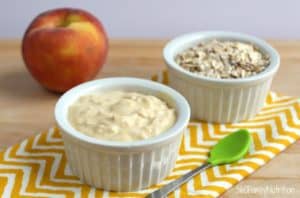
5 – 6 months old:
Freshly pureed fruits and vegetables: any fruits or vegetables is good for your baby’s brain development. Basically, as long as you baby likes it, you can feed it. However, just in case your baby develops allergic reactions to a certain type of food, make sure you offer new food one by one on its own for at least a day or two before combining foods together. This way, you would know exactly which food he/she is allergic to. And remember, no salts or sugar! Here’s some of our favourites:
First Veggies:
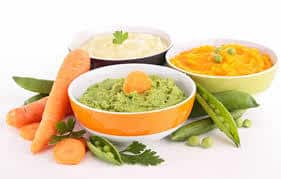
- Carrots contains rich beta-carotene (vitamin A) to help support his immune system. Carrots have a natural sweet taste that babies love!
- Butternut squash also contains rich beta-carotene and is easily digested. It rarely causes allergies, which makes it a perfect weaning food for young babies.
- Sweet potato is a good source of potassium, vitamin C, beta-carotene, and fiber.
- Broccoli is a great sources of vitamin C, beta-carotene, folic acid, iron, and potassium. It is the Superfood for babies and adults. However, many babies and young children don’t like the taste of broccoli; you can try mixing it with a sweet-tasting vegetable like sweet potato or carrots to encourage your baby to eat broccoli.
- Potatoes contain vitamin C and potassium. Their blend taste make them easy to blend well with most vegetables.
- Zucchini is a good source of beta-carotene. It’s important not to peel its skin as most of the nutrients lie there.
First Fruits:

- Apples are extremely rich in important antioxidants and dietary fiber. Babies and young children often love the sweet taste of apples.
- Avocados are a good source of pantothenic acid, dietary fiber, vitamin K, copper, folate, vitamin B6, potassium, vitamin E, and vitamin C. Although hey are fruits, avocados have a high (good) fat content that is about 20 times the average for other fruits, making it a great superfood for baby development.
- Bananas are packed with nutrients like vitamin B6, potassium, vitamin C, and vitamin B12. Like avocados, bananas are considered as superfood or power food for babies.
- Blueberries are high in antioxidants and contain fiber, vitamin A, and vitamin C. Blueberries are a wonderful healthy food for babies and adults alike.
7 months onwards:
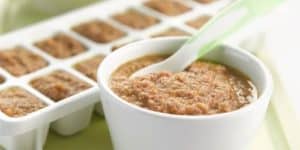 If your baby is doing well on the vegetables and fruits, you can start introducing a little bit of meat and poultry at 6 months. Many pediatrics authorities, specifically in Canada, the EU and the U.K. recommend meat as one of baby’s first solid foods but not as the first food. In the U.S., the recommendation to start meats earlier than 8 months is also becoming more common. Here are so tips for introducing meat to your baby:
If your baby is doing well on the vegetables and fruits, you can start introducing a little bit of meat and poultry at 6 months. Many pediatrics authorities, specifically in Canada, the EU and the U.K. recommend meat as one of baby’s first solid foods but not as the first food. In the U.S., the recommendation to start meats earlier than 8 months is also becoming more common. Here are so tips for introducing meat to your baby:
- Meats must be fully cooked
- When pureeing meat, first cut the meat into small cubes/chunks, put them in a blender or food processor and puree until a powdery mix is formed. You can then slowly add water to it and puree further until a smooth consistency is created. You can add as much liquid as needed to make a consistency appropriate for your baby.
- Add your baby’s favourite veggies and/or fruit to any of the meat baby food puree to make it more palatable for your baby
How much solids to feed?
This really depends on your baby. It is recommended to start with VERY little, like a teaspoon, at the very beginning. At 4-5 months, feeding solids is really just for practice and fun. After the initial stage, you can start to offer more based on how much your baby wants.
Babies generally display these cues when they want more food:
- Excited at the sight of food by kicking their little feet
- Open their mouths wide when food is being offered
When your baby is full, he/she would probably do the following:
- Cry at the sight of food
- Shut their mouth tight
- Spit out food and wouldn’t swallow
- Look away from the food
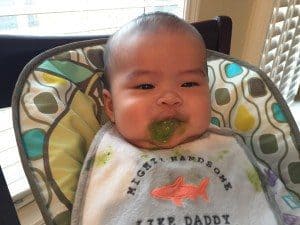 Tip: When you see these signs of fullness, just stop feeding your baby. Forcing babies to eat more than what they need is a cause of over-feeding. We want to make mealtime fun for them, not stressful.
Tip: When you see these signs of fullness, just stop feeding your baby. Forcing babies to eat more than what they need is a cause of over-feeding. We want to make mealtime fun for them, not stressful.
Solids BEFORE milk or AFTER milk?
At 4-8 months, milk is still the primary source of nutrients for babies. It is important for them to drink at least 20 oz of milk per day or 5 breastfeeds of about 10-20 min each. To ensure baby Kayden gets his daily milk amount, we chose to do milk first, solids second. Here’s a sample feeding schedule.
6-7am: wake up and breastfeed
8-10am: morning nap
10am: breastfeed
11:30am: solids (lunch)
12-1:30pm: afternoon nap
2pm: bottle feed (4oz)
5-5:45pm: cat nap
6pm: bottle feed (4-5 oz)
6:30pm: solids (dinner)
11pm: dream feed (5-6 oz) – read more about how dream feed can help you sleep through the night.
Other tips on feeding solids:

- Have a high-chair ready, this way, your baby can associate the high chair with eating to promote good eating habits
- Use big plastic bibs (with or without sleeves) to make cleaning easier
- Use plastic utensils made for babies
- Play some children songs or classical music to make mealtime fun and engaging
Hope this answers some of your questions about starting babies on solids! Comment below to let share your best baby feeding tips. Bon appetite!
Love Baby Mozart?
Follow us on Social Media!
Subscribe today to get exclusive advice on our latest parenting tips, brain development tools, music and songs updates, and much much more! Remember, it's 100% FREE!




